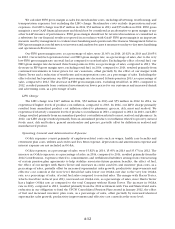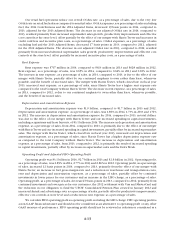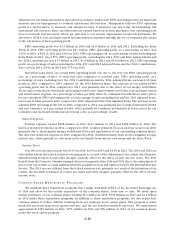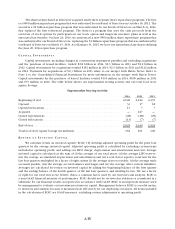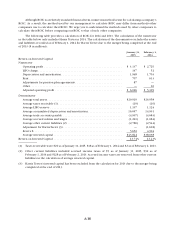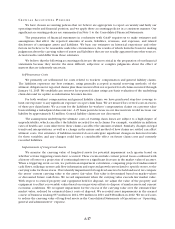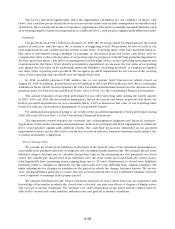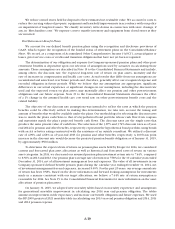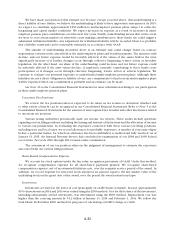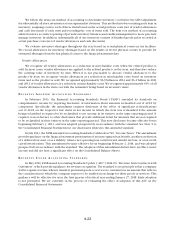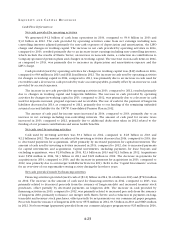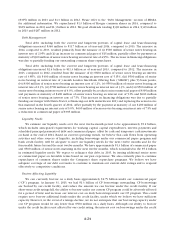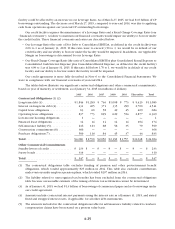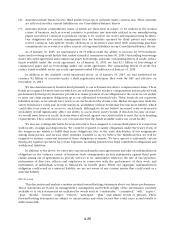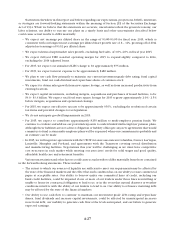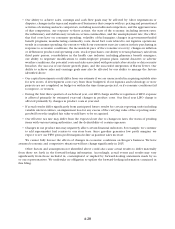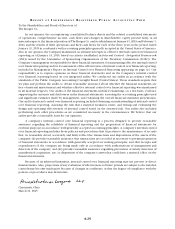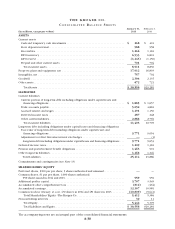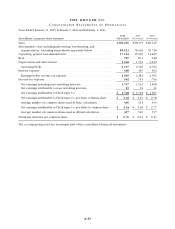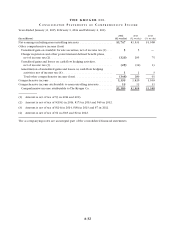Kroger 2014 Annual Report Download - page 87
Download and view the complete annual report
Please find page 87 of the 2014 Kroger annual report below. You can navigate through the pages in the report by either clicking on the pages listed below, or by using the keyword search tool below to find specific information within the annual report.A-22
We follow the item-cost method of accounting to determine inventory cost before the LIFO adjustment
for substantially all store inventories at our supermarket divisions. This method involves counting each item in
inventory, assigning costs to each of these items based on the actual purchase costs (net of vendor allowances
and cash discounts) of each item and recording the cost of items sold. The item-cost method of accounting
allows for more accurate reporting of periodic inventory balances and enables management to more precisely
manage inventory. In addition, substantially all of our inventory consists of finished goods and is recorded at
actual purchase costs (net of vendor allowances and cash discounts).
We evaluate inventory shortages throughout the year based on actual physical counts in our facilities.
We record allowances for inventory shortages based on the results of recent physical counts to provide for
estimated shortages from the last physical count to the financial statement date.
Vendor Allowances
We recognize all vendor allowances as a reduction in merchandise costs when the related product is
sold. In most cases, vendor allowances are applied to the related product cost by item, and therefore reduce
the carrying value of inventory by item. When it is not practicable to allocate vendor allowances to the
product by item, we recognize vendor allowances as a reduction in merchandise costs based on inventory
turns and as the product is sold. We recognized approximately $6.9 billion in 2014 and $6.2 billion in 2013
and 2012 of vendor allowances as a reduction in merchandise costs. We recognized approximately 93% of all
vendor allowances in the item cost with the remainder being based on inventory turns.
RE C E N T L Y A D O P T E D A C C O U N T I N G S T A N D A R D S
In February 2013, the Financial Accounting Standards Board (“FASB”) amended its standards on
comprehensive income by requiring disclosure of information about amounts reclassified out of AOCI by
component. Specifically, the amendment requires disclosure of the effect of significant reclassifications
out of AOCI on the respective line items in net income in which the item was reclassified if the amount
being reclassified is required to be reclassified to net income in its entirety in the same reporting period. It
requires cross reference to other disclosures that provide additional detail for amounts that are not required
to be reclassified in their entirety in the same reporting period. This new disclosure became effective for us
beginning February 3, 2013, and was adopted prospectively in accordance with the standard. See Note 9 to
the Consolidated Financial Statements for our disclosures related to this amended standard.
In July 2013, the FASB amended Accounting Standards Codification 740, “Income Taxes.” The amendment
provides guidance on the financial statement presentation of an unrecognized tax benefit, as either a reduction
of a deferred tax asset or as a liability, when a net operating loss carryforward, similar tax loss, or a tax credit
carryforward exists. This amendment became effective for us beginning February 2, 2014, and was adopted
prospectively in accordance with the standard. The adoption of this amendment did not have an effect on net
income and did not have a significant effect on the Consolidated Balance Sheets.
RE C E N T L Y I S S U E D A C C O U N T I N G S T A N D A R D S
In May 2014, FASB issued Accounting Standards Update (“ASU”) 2014-09, “Revenue from Contracts with
Customers”, which provides guidance for revenue recognition. The standard’s core principle is that a company
will recognize revenue when it transfers promised goods or services to customers in an amount that reflects
the consideration to which the company expects to be entitled in exchange for those goods or services. This
guidance will be effective for us in the first quarter of its fiscal year ending January 27, 2018. Early adoption
is not permitted. We are currently in the process of evaluating the effect of adoption of this ASU on the
Consolidated Financial Statements.


